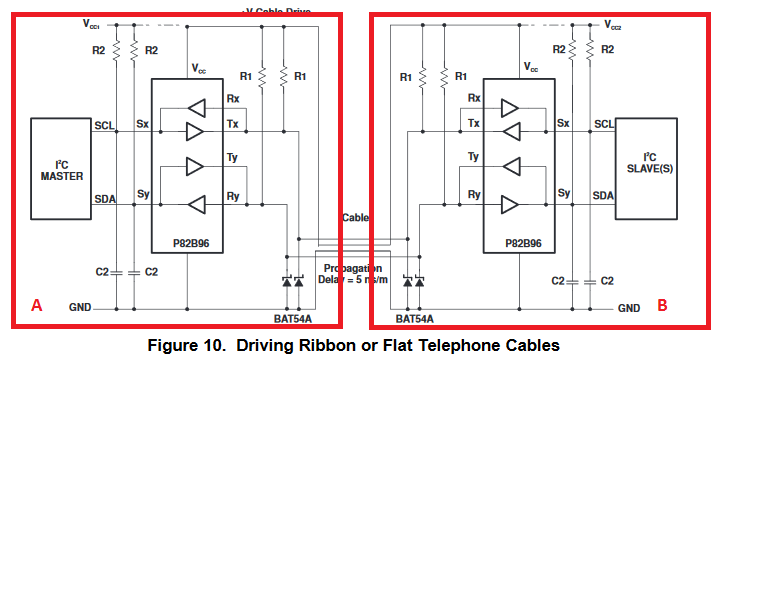Other Parts Discussed in Thread: LP55231, P82B715, TCA9517
Hi Sirs,
We would like to use P82B96.
May i know how to place P82B96 ? One for master side and one for slave side?
And how many P82B96 we need per board?
Actually our application is like datasheet page 1 Long-Distance I 2C Communications
The fist board is connect cable to second board. And second board is connect cable to third board.
Thanks!!



